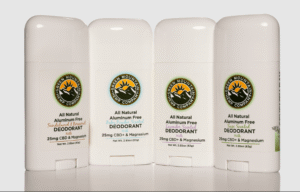Rust removal is an essential task in many industries, from automotive and construction to manufacturing and restoration. Traditional rust removal methods such as sanding, scraping, and chemical treatments can be time-consuming, inefficient, and hazardous to both users and the environment. However, a game-changer has arrived: the laser rust cleaner.
Laser rust cleaning uses advanced laser technology to remove rust and contaminants from metal surfaces in a fast, precise, and environmentally friendly way. This method is gaining popularity due to its numerous benefits, including precision, cost-effectiveness, minimal waste, and zero chemical usage. In this guide, we will explore everything you need to know about laser rust cleaners, how they work, their benefits, and why they might be the ideal solution for your rust removal needs.
Table of Contents
-
What is a Laser Rust Cleaner?
-
How Does Laser Rust Cleaning Work?
-
Benefits of Using a Laser Rust Cleaner
-
Laser Rust Cleaner vs Traditional Methods
-
Common Applications of Laser Rust Cleaning
-
Frequently Asked Questions (FAQs)
-
Laser Rust Cleaner: Maintenance and Safety Tips
What is a Laser Rust Cleaner?
A laser rust cleaner is a device that uses high-powered laser beams to remove rust, oxides, and other contaminants from metal surfaces. Unlike traditional methods that involve physical abrasion or harsh chemicals, laser rust cleaning relies on a focused laser beam to vaporize the rust and leave the underlying material intact.
The laser works by emitting pulses of energy onto the rusty surface. The energy from the laser raises the temperature of the rust to the point where it evaporates, allowing for easy removal. This process is incredibly precise and can be controlled to ensure that only the rust is affected, not the underlying metal.
How Does Laser Rust Cleaning Work?
Laser rust cleaning operates on the principle of laser ablation, where a laser beam is focused on the surface of the metal. When the laser light hits the rust, it is absorbed by the rust particles, causing them to rapidly heat up. This heat causes the rust to expand and eventually evaporate. The vaporized rust is then removed, often using a jet of compressed air.
Some key factors that influence the effectiveness of laser rust cleaning include:
-
Laser Power: Higher laser power is typically used for removing thicker rust layers or contaminants.
-
Pulse Frequency: The frequency of the laser pulses can be adjusted based on the type and thickness of the rust.
-
Focus Spot Size: The size of the laser’s focal point affects how quickly and precisely the rust can be removed.
Benefits of Using a Laser Rust Cleaner
Laser rust cleaning has several advantages over traditional rust removal methods. Here are some of the most notable benefits:
1. Eco-Friendly
Laser rust cleaning is an environmentally friendly alternative to chemical rust removers or abrasive techniques. It doesn’t require harmful chemicals, reducing the risk of pollution or exposure to toxic substances.
2. Non-Destructive
Unlike abrasive methods that can damage the metal surface, laser rust cleaning is highly precise and only targets the rust. This ensures the underlying material remains intact, preserving the integrity of the metal.
3. Cost-Effective
While the initial investment in a laser rust cleaner may be higher, it can save significant costs in the long run. Laser cleaning reduces the need for consumables like chemicals or abrasive materials, and its precision helps reduce the amount of time spent on rust removal.
4. High Efficiency
Laser rust cleaners can work much faster than traditional methods. The high precision and efficiency of the process allow for quick removal of rust, reducing downtime and improving productivity.
5. Minimal Waste
Unlike sandblasting or chemical treatments that create a lot of waste, laser rust cleaning produces minimal debris, making it easier to clean up and maintain a safe working environment.
6. Improved Safety
Traditional rust removal methods, such as sandblasting or chemical treatments, can expose workers to hazardous dust, fumes, or chemicals. Laser rust cleaning, on the other hand, reduces exposure to these risks, providing a safer working environment.
Laser Rust Cleaner vs Traditional Methods
To understand the advantages of laser rust cleaners, let’s compare them to traditional rust removal methods:
| Method | Laser Rust Cleaner | Traditional Methods |
|---|---|---|
| Precision | Highly precise; only targets the rust | Can be less precise; risk of damaging underlying metal |
| Speed | Faster rust removal | Slower, especially for heavy rust |
| Eco-Friendliness | No chemicals or waste | Often requires chemicals or abrasive materials |
| Waste Production | Minimal waste | Can produce a lot of dust and debris |
| Surface Damage | Non-destructive | Can cause surface damage or pitting |
| Safety | Safer, minimal exposure to harmful substances | Can expose workers to hazardous materials or dust |
| Cost | Higher initial cost, but cost-effective long term | Lower initial cost, higher ongoing costs due to materials and labor |
Common Applications of Laser Rust Cleaning
Laser rust cleaners have a wide range of applications across various industries. Here are some common uses:
1. Automotive Industry
Laser rust cleaning is ideal for removing rust from car parts, chassis, and engines. It ensures that the metal surface is preserved, preventing the risk of damaging sensitive components.
2. Shipbuilding
In the shipbuilding industry, laser rust cleaners are used to clean large metal surfaces, including ships’ hulls and decks. The laser system can be adapted to handle extensive rust on steel structures.
3. Construction and Infrastructure
Steel beams, bridges, and other infrastructure components can accumulate rust over time. Laser cleaning provides a fast, non-destructive way to remove rust and prepare surfaces for painting or further treatment.
4. Metal Restoration
Laser rust cleaning is highly effective for restoring historical metal objects, sculptures, and artifacts. Its precision ensures that the original surface is preserved, and delicate details are maintained.
5. Heavy Equipment Maintenance
For heavy machinery and industrial equipment, laser cleaning is an efficient method for removing rust and keeping parts in optimal condition without causing wear and tear.
Frequently Asked Questions (FAQs)
1. Is laser rust cleaning safe?
Yes, laser rust cleaning is safe when performed correctly. Operators must follow safety guidelines, wear protective gear, and ensure the equipment is in good working condition.
2. How long does laser rust cleaning take?
The time it takes depends on the size of the area being cleaned and the thickness of the rust. However, laser cleaning is generally much faster than traditional methods.
3. Can a laser rust cleaner be used on all metals?
Laser rust cleaners can be used on most metals, including steel, iron, and aluminum. However, the settings may need to be adjusted for different materials to avoid damage.
4. Are laser rust cleaners expensive?
While the initial investment can be higher than traditional methods, laser rust cleaners are cost-effective in the long run because they require fewer consumables and less labor.
5. Is laser rust cleaning better than sandblasting?
In many cases, yes. Laser rust cleaning is more precise, faster, and less damaging to the metal surface compared to sandblasting.
Laser Rust Cleaner: Maintenance and Safety Tips
To ensure the longevity and safety of your laser rust cleaner, regular maintenance and adherence to safety protocols are essential. Here are some maintenance tips:
-
Regularly Clean the Laser Lens: Dust and debris can accumulate on the lens and affect the performance of the laser. Clean it regularly with a soft cloth to maintain optimal efficiency.
-
Inspect Power Settings: Make sure the laser power settings are appropriate for the type of material you are cleaning.
-
Check Cooling System: Ensure that the cooling system is functioning properly to prevent overheating during prolonged use.
-
Follow Safety Guidelines: Always wear protective gear such as goggles and gloves when operating the laser cleaner, and make sure the work area is free of flammable materials.



